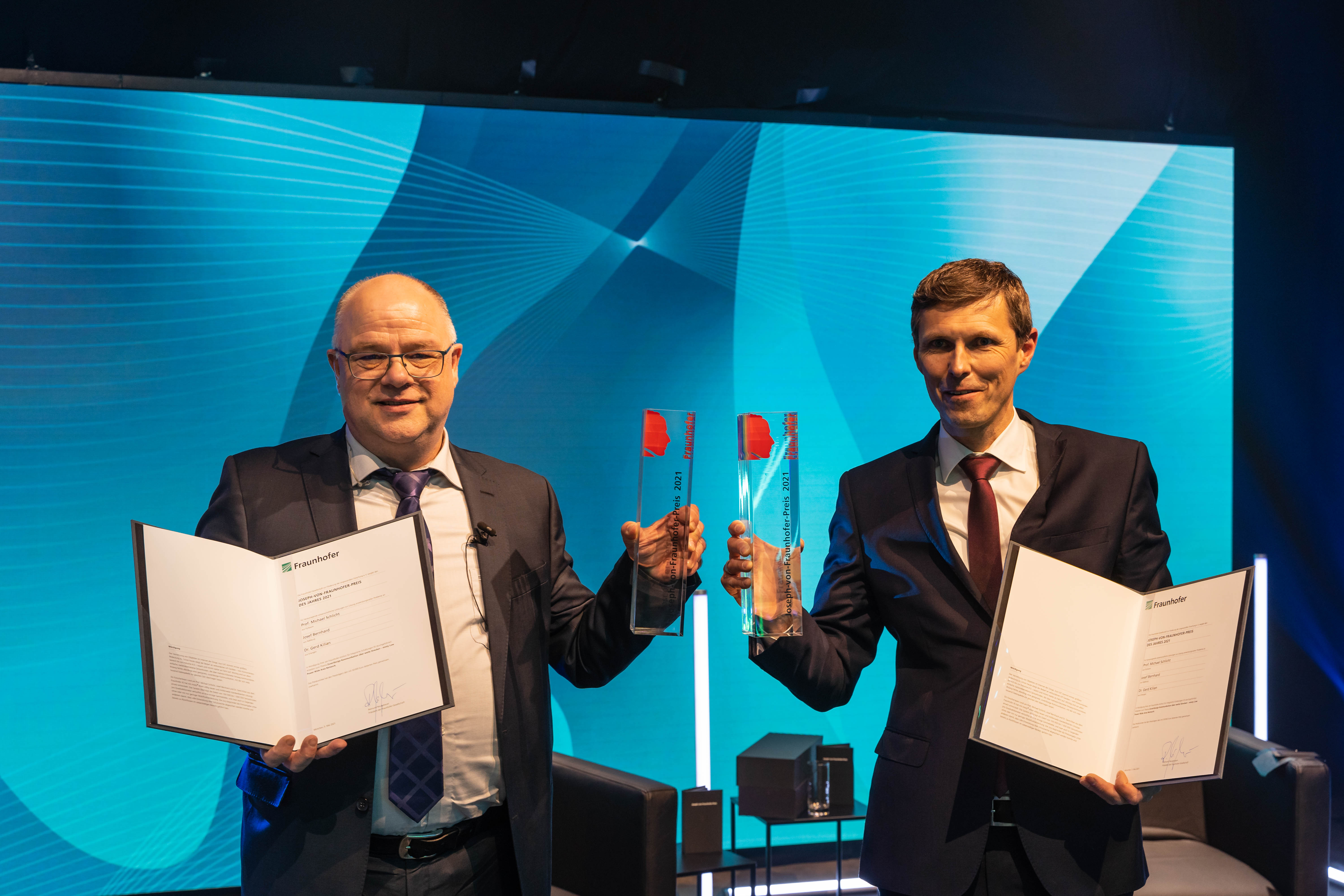Reducing the energy consumption of entire industrial complexes, optimizing the irrigation of fields, or monitoring CO2 emissions are just some of the capabilities of mioty®. This miniaturized IoT sensor network is setting new standards in terms of the robustness, range, scalability, and energy efficiency of wireless data transmission. It was in recognition of this that the jury awarded the Joseph von Fraunhofer Prize to Professor Michael Schlicht, Josef Bernhard, and Dr. Gerd Kilian as representatives of the whole research team at Fraunhofer IIS.
Efficient and robust networking
Although the IoT era has brought increased demand for networked IoT devices, there has so far been no reliable way of transmitting thousands of data packets at the same time. In contrast, mioty® technology is capable of transmitting data from thousands or even hundreds of thousands of sensor nodes per square kilometer to a single gateway with no loss of information. The sensor data is sent in small packets in staggered transmissions and at different frequencies, thereby reducing energy consumption and making transmission more robust. Operation is also problem-free in parallel with other radio systems and in areas with no mobile communications coverage. Thanks to the high level of energy efficiency, the devices have a battery life of up to 20 years.
The ETSI-standardized mioty® technology is used in particular for low-power wide-area networks.
